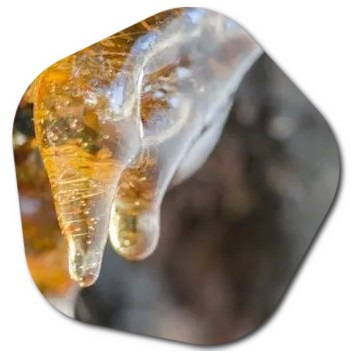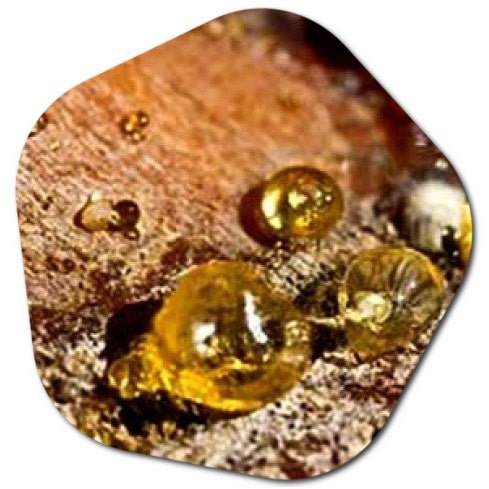On which trees is pine gum found in America?
Pine gum comes out of the bark of spruce trees in the form of marbles and is collected one by one by people; it is found in the southern regions above 1200 altitude. It is the chewing gum that is first collected by shepherds when they go to the highlands and offered as a gift to friends and relatives on their return from the highlands.
Pine gum, also known as pine resin or pine pitch, has been traditionally used in America for various purposes. It is valued for its sticky and aromatic properties. Common uses in America include adhesive and glue for repairs, wound care to prevent infection and aid healing, crafting and DIY projects, natural incense in rituals and aromatherapy, chewing gum in historical contexts, and as an ingredient in soap and cosmetics. Pine gum is also associated with cultural and ritual practices. Its use may vary by region and culture, and it’s important to collect it ethically and process it correctly for safe and effective applications.
Pine gum, also known as pine resin or pine pitch, is found on various species of pine trees across North America. In North America, some of the pine tree species that produce pine gum or resin include:
- Eastern White Pine (Pinus strobus): Eastern white pine is native to eastern North America and is known for producing resin that can be used for various purposes.
- Ponderosa Pine (Pinus ponderosa): Ponderosa pine is found in the western United States and Canada, and it also produces resin with various applications.
- Pitch Pine (Pinus rigida): Pitch pine, as the name suggests, is particularly known for its resinous properties and is found in the eastern United States.
- Longleaf Pine (Pinus palustris): Longleaf pine trees, which are predominantly found in the southeastern United States, also produce pine resin.
- Loblolly Pine (Pinus taeda): Loblolly pine, another southeastern pine species, produces resin as well.
- Jeffrey Pine (Pinus jeffreyi): Jeffrey pine trees, primarily found in the western United States, produce resin similar to other pine species.
- Slash Pine (Pinus elliottii): Slash pine, which is native to the southeastern United States, also produces resin.

These are just a few examples of pine tree species found in North America that produce pine gum or resin. Each of these pine species may produce resin with slightly different properties and uses. Pine gum has a range of traditional and practical applications, including as an adhesive, in incense, for medicinal purposes, and more. The specific uses and quality of pine gum may vary depending on the tree species and the region in which it is collected.
Where is pine gum sold in the US?
Pine gum, also known as pine resin or pine pitch, is not typically sold in mainstream retail stores in the United States. However, you can find pine gum or pine resin products through various channels, including specialty stores, online retailers, and herbal or natural product shops. Here are some places where you may be able to purchase pine gum in the US:
- Natural Health Stores: Many health food stores, herbal shops, and natural product retailers carry pine gum or pine resin products, especially those used for traditional or natural remedies.
- Online Retailers: Online marketplaces like Amazon, Etsy, and specialty websites that focus on natural products often offer a variety of pine resin products, including raw pine gum, pine salves, pine resin incense, and more.
- Apothecaries: Traditional apothecaries and herbal medicine shops may carry pine gum or pine resin for various uses, including in salves and ointments.
- Craft and DIY Supply Stores: Some craft and hobby stores may offer pine resin for use in crafting, candle making, and other creative projects.
- Local Artisan or Herbalists: Local herbalists, artisans, and craftspeople may sell pine resin products at farmers’ markets, craft fairs, or through small, local businesses.

When purchasing pine gum or pine resin products, it’s essential to ensure that the source is reputable, and the product is suitable for your intended use. Pine resin can vary in quality and purity, so it’s important to read product descriptions, user reviews, and ingredient lists when buying online. Additionally, some individuals prefer to collect pine resin directly from pine trees in their local area, following sustainable harvesting practices.
Please note that the availability of pine gum products may vary by location and over time, so it’s a good idea to search for specific retailers or online sources that cater to your needs and preferences.
What is pine gum good for in America?
Pine gum, also known as pine resin or pine pitch, has a variety of traditional and practical uses in America and around the world. Here are some of the common uses for pine gum in America:
Adhesive and Glue: Pine gum is naturally sticky and has been used as an adhesive for various purposes. It can be used to repair tools, pottery, and wooden items, or even as a binding agent in the construction of canoes.
Wound Care: Pine gum has potential antimicrobial properties and has been used traditionally to treat minor cuts, scrapes, and wounds. It can be applied topically to help prevent infection and promote healing.
Natural Incense: When burned, pine gum releases a pleasant, woodsy fragrance. It is used as an ingredient in incense blends and can be burned as incense itself for aromatherapy and spiritual rituals.
Crafts and DIY Projects: Pine gum is used in various craft and DIY projects, such as making resin jewelry, sculptures, and decorative items. It can add a unique and natural touch to creative endeavors.
Soap and Cosmetics: Pine gum is sometimes used as a natural fragrance and ingredient in soaps and cosmetics, providing a pleasant pine scent.
Chewing Gum: Historically, pine gum was used as a chewing gum by indigenous peoples and early settlers in North America. While modern chewing gum is often made with synthetic ingredients, some artisanal products still use natural resins.
Traditional Medicine: Pine gum has been used in traditional medicine for its potential wound-healing properties and as a salve for various skin conditions.
Insect Repellent: Pine gum can be burned or applied to the skin as a natural insect repellent due to its aromatic properties, though its effectiveness may vary.
Cultural and Ritual Uses: Pine gum is sometimes used in cultural and ritual practices, including smudging ceremonies and purification rituals.
It’s important to note that the use of pine gum may vary by region and culture, and the specific type of pine tree from which it is obtained can also influence its properties and applications. While pine gum has various potential uses, it should be collected ethically and without causing harm to the tree. Additionally, when using pine gum for medicinal or topical applications, proper processing and filtering may be necessary to remove impurities and ensure safety.





